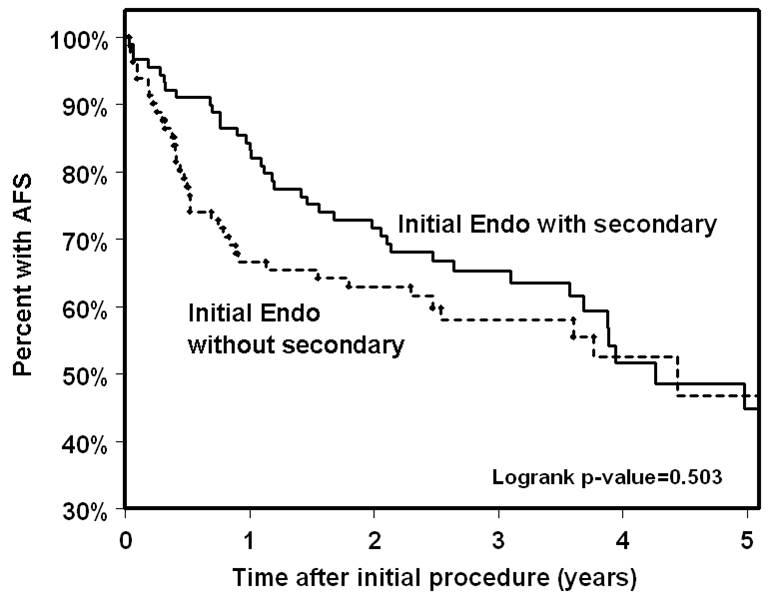Back to Annual Meeting Abstracts
Selective Endovascular-first approach for critical limb ischemia carries minimal cost of worsening long-term outcomes
Karan Garg, Patrick A Kaszubski, Rameen Moridzadeh, Caron B Rockman, Mark A Adelman, Thomas S Maldonado, Frank J Veith, Firas F Mussa
NYU Langone Medical Center, New York, NY
OBJECTIVES: Treatment failures are common in patients with critical limb ischemia (CLI) and are associated with increased risk of limb loss. Endovascular-first approach is associated with worse overall limb salvage rates presumably because subsequent open bypass options are compromised. To evaluate the effect of endo-first interventions, we examined the late outcomes of patients with failed endovascular attempts undergoing secondary interventions.
METHODS: We identified a cohort of 302 patients with CLI, from March 2007 to December 2010. Endo-first was selected if: 1) the patient had short (5-7cm occlusions or stenoses in crural vessels) 2) the disease in superficial femoral artery disease was limited to TASC II A, B or C and 3) no impending limb loss. Endo-first was performed in 187. Failures were defined as recurrent clinical signs and symptoms of CLI.
RESULTS: Secondary procedures (either endo or open) were less common after endo-first (endo 102 of 187, 55% vs. open 71 of 105, 68%; p= 0.029). Secondary revascularization was carried out using endovascular (57 of 102), open (38 of 102) and hybrid interventions (7 of 102). The 5-year limb salvage rate for endo-first with a secondary intervention was 83% and amputation-free survival (AFS) was 45%, and was no different for those not requiring a secondary intervention. For failures requiring open revascularization, the limb salvage and AFS rates at five years were 87% and 59%, respectively. For those treated using endovascular revascularization, the limb salvage and AFS rates at five years were 82% and 35%, respectively
CONCLUSIONS: Failed initial endovascular revascularizations for CLI requiring secondary interventions (either endovascular or open) have favorable limb salvage rates and AFS. In patients with CLI undergoing a selective endovascular-first approach for revascularization, failure does not confer poor prognosis in the long-term in properly selected patients. Furthermore, open reconstruction options may not be compromised after an endovascular intervention in appropriately selected patients. 
Back to Annual Meeting Abstracts
